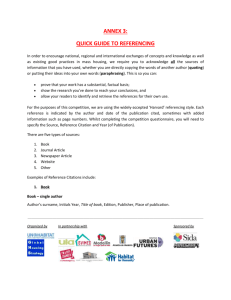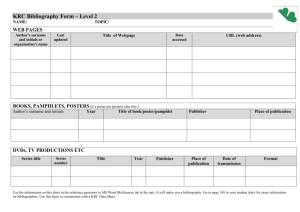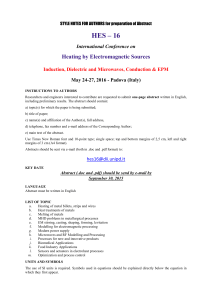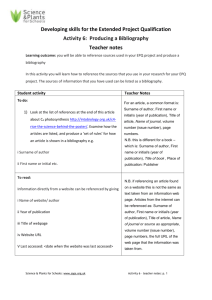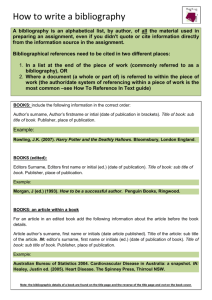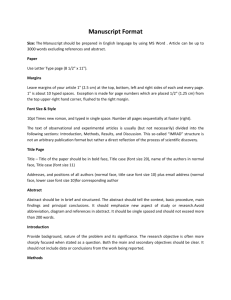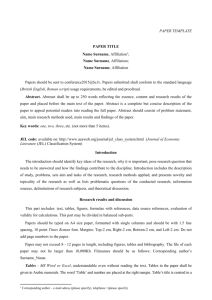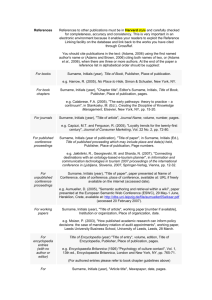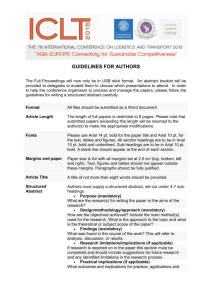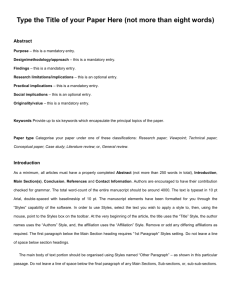Asia Project 2013
advertisement
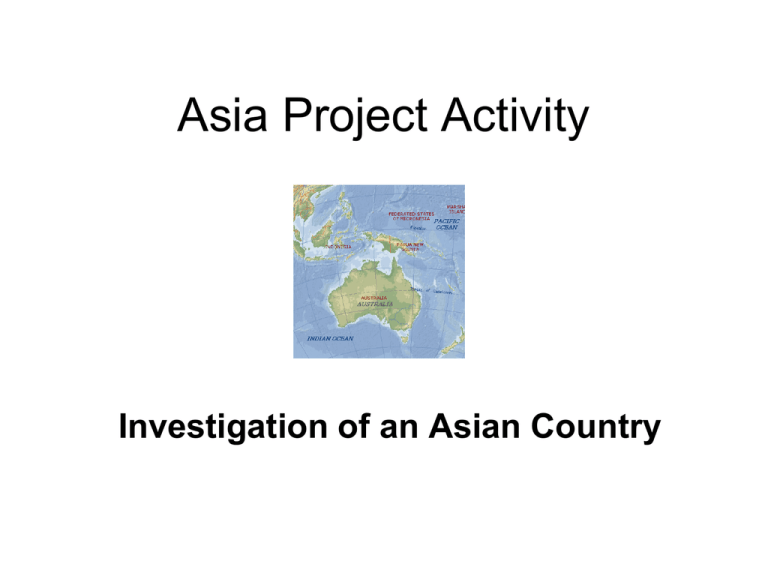
Asia Project Activity Investigation of an Asian Country Select one of Australian’s neighboring countries and find out as much as you can about it. Countries may include: Malaysia, Thailand, Vietnam, Japan, India, Burma, Laos, Indonesia (Bali), East Timor, North Korea, Papua New Guinea, China, Bangladesh. You can gather information by: •Looking at Encarta for kids on your Edustar menu •Choosing ONE other reputable website. •Researching using books. The project is divided into two parts. Section Part 1 What are the features of the country? How do the people of this country live? Ideas for investigation Major towns and cities Landmarks Tourist attractions Population Weather Native flora and fauna Famous people History Laws Religion Culture Food Music Dance Celebrations Traditional Clothing Part 2 Comparison matrix between Australia and the chosen country? Immigration Emigration Tourism Sister cities Sporting War Trade Overseas students Australian Aid You will present your completed project to the class and also submit an electronic and hard copy. Asia Project Rubric Teacher Name: Country: CATEGORY High 5 Medium 3 Low 1 Writing is in your own words. There is appropriate information. Not much information is included. Some of the work is in your own words. Not all the information is included. The information is copied from sources. Creativity The project contains many creative details and/or descriptions that make the project engaging (labelled pictures and diagrams) The completed tasks contain some creative details. The model looks alright. There is not much effort put into the project. It looks plain and boring. Not engaging. Presentation/ Layout The submitted project is readable, clean, neat and attractive. Words are easy to read (nice font, big enough text). The submitted project is readable but a bit messy. The submitted project is not neat or attractive. It is very hard to read. Structure The project includes an explanation and model. There is a bibliography with at least two sources of information. There is a minimum of 400 words. The project includes an explanation and a model. There is a bibliography. There are less than 400 words. The project is incomplete. There is not enough information included. Information/ Content Effective use of time Total mark High 3 Presentation - Category 1 Presentation is made on the required date. 2 Uses cue cards. 3 Stands still and straight. 4 Looks around the audience. 5 Speaks clearly so everyone can hear them. 6 Sticks to two minute time period. 7 Demonstrates a good understanding of the topic Medium 2 Low 1 Total Score for Presentation: Not Shown 0 ______ out of 21 Grade = Total for Investigation + Total for Presentation 46 45-41 40-36 35-32 3129 28-26 2523 22-0 A+ A B+ B C+ C D+ No Grade Writing a Bibliography Write the word 'Bibliography' at the top of the page. Arrange the details of each reference in the following order: 1. BOOKS a Surname and then initials or first names of the author b Date of publication (in brackets) c Title of book underlined d Publisher Examples: BOOK with ONE author: Pyers, G. (2002), Gold, Echidna Books, Carlton, Vic. BOOK with TWO authors: Ashford, J. and Odam, J. (2000), Start with a scan, 2nd. ed., Peachpit Press, Berkeley, CA. BOOK with THREE or MORE authors: Hazards by Mark Manuel et al (1997), Cambridge University Press, Cambridge (please note that "et al." means "and others") BOOK with NO RECORDED author The Oxford literary history of Australia, (1998) Oxford University Press, South Melbourne. (please note that the book is listed under title) 2. Articles in Newspapers a Surname and initials of author of article b Year of paper in which article appeared in brackets c Title of article (in quotation marks) Example: Baker, Richard (2002), "State in $100m bid to cut greenhouse emissions", The Age, June 6, p.3. d Name of paper (underlined) e Specific date f Page number 3. Articles in Magazines a Surname and initials of author of article b Year of publication c Title of article (in quotation marks) d Title of magazine in which article appeared (underlined) e Volume number of magazine ( if applicable ) f Specific month g Page numbers Example: Perry, Alex (2002), 'On the brink', Time, 3 June, pp.44-6 3. Material from the Internet a Surname and initials of author of article b Year of paper in which article appeared in brackets c Title of article (in quotation marks) Example: Baker, Richard (2002), "State in $100m bid to cut greenhouse emissions", The Age, June 6, p.3. d Name of paper (underlined) e Specific date f Page number Points to Remember If there are three or more authors, e.g. Mark Manuel, Barrie McElroy & Roger Smith YOU WRITE Manuel, Mark et al. When there is more than one place of publication, e.g. Penguin, Ringwood, Vic., Harmondsworth, New York, Toronto YOU WRITE The first place of publication, i.e. Penguin, Ringwood, Vic. Do not write countries as the place of publication, e.g. Oxford University Press, South Melbourne, Victoria, Australia. YOU WRITE Oxford University Press, South Melbourne, or Oxford University Press, South Melbourne, Vic. Do not confuse publisher with printer Publisher: the person or firm that offers the book for sale Printer: the person or firm that sets up the text and illustrations, and prints copies of the book. When selecting the date of publication use the copyright date, i.e. the date following this symbol: © Questions to start with. To make notes, you need to pick out the most important points. These are called KEY WORDS write the key words and phrases in the boxes then rewrite the information in your our words. Place the original text here: Indonesia is a vast equatorial archipelago of 17,000 islands extending 5,150 kilometers east to west, between the Indian and Pacific Oceans in Southeast Asia. The largest islands are Sumatra, Java, Kalimantan, Sulawesi. The Islands are mountainous with dense rain forests, and some have active volcanoes. Indonesia, the world's fourth most populous nation, is 86 percent Muslim ( the largest Islamic country). Indonesians are separated by seas and clustered on islands. The largest cluster is on Java, with some 130 million inhabitants (60 percent of the country's population) on an island the size of New York State. Sumatra, much larger than Java, has less than a third of its people. Ethnically the country is highly diverse, with over 580 languages and dialects—but only 13 have more than one million speakers. Export earnings from oil and natural gas help the economy. Tourists come to see the rich diversity of plants and wildlife—some, like the giant Komodo dragon and the Javan rhinoceros, exist nowhere else. Place your new text here: Comparison Matrix How does it work? This tool will help you to sort out your information about different items, these can be physical (eg. animals) or situational (eg. holidays), in such a way that you can compare them to each other and make some findings. Key elements to think about... 1. Down the left had side list the elements linked to one type of criteria. 2. Across the top list the elements linked to another set of criteria. 3. Now use grid referencing skill to place a tick in each box where the elements are found to be common to both sets of criteria. Comparison Matrix between Australia and my research country School age Australia Your country Findings: Marriage Driving Voting Penalties (Law) Your Choice Your Choice Your Choice
